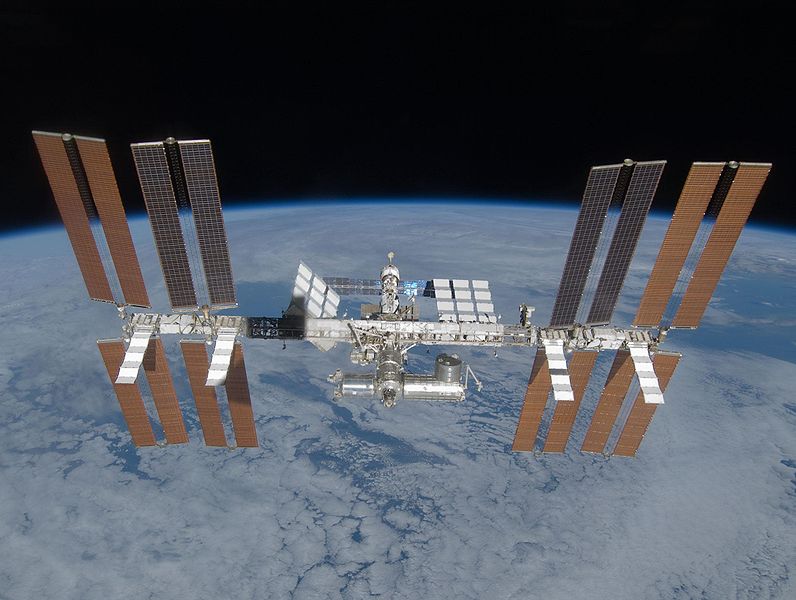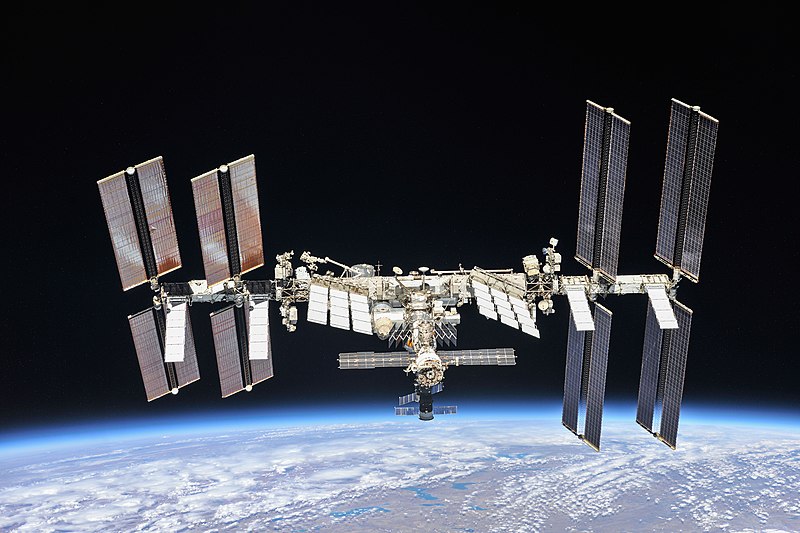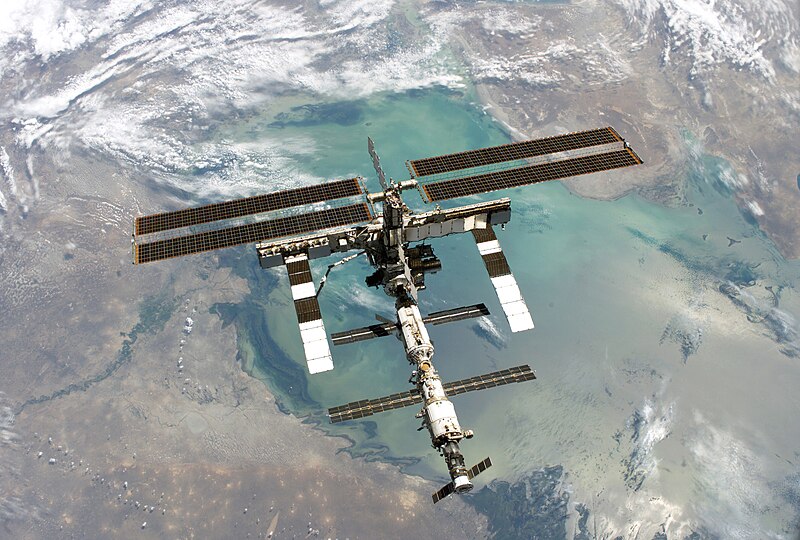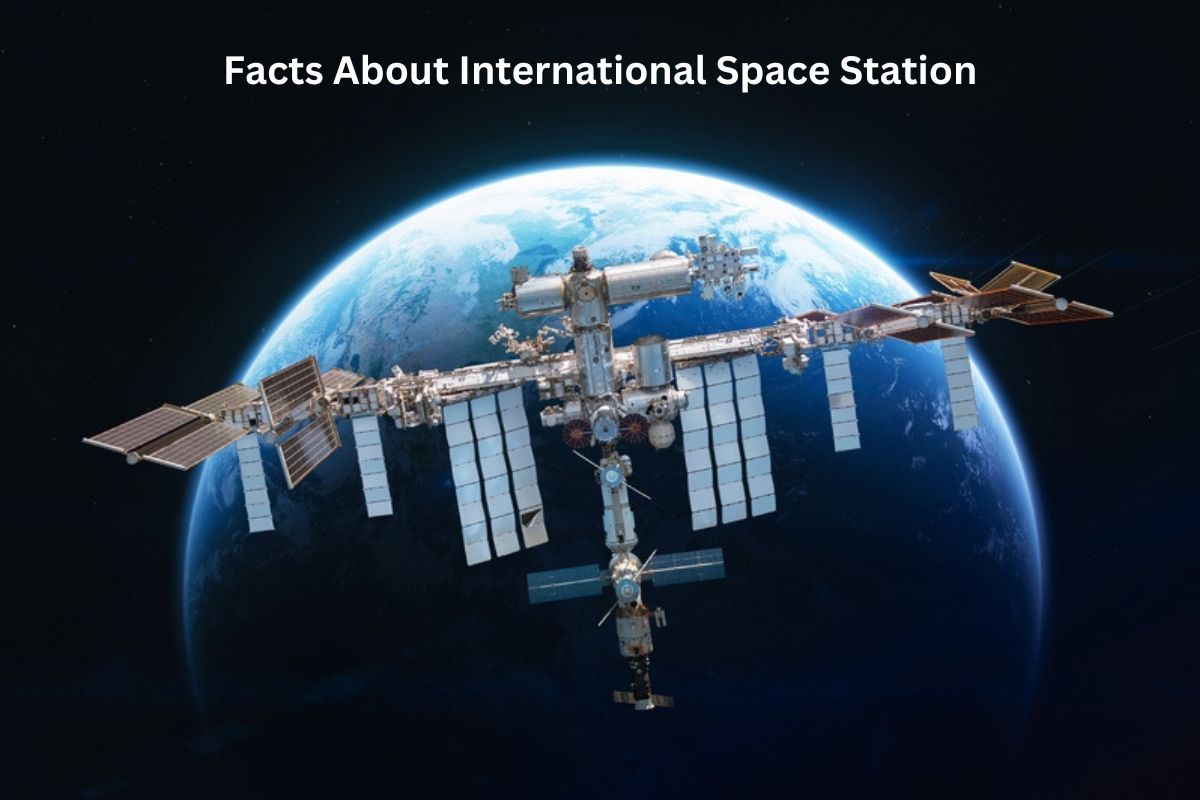The International Space Station (ISS) is a remarkable achievement in space exploration and international cooperation. Located in low Earth orbit, it serves as a microgravity laboratory for scientific research and experiments.
This modular space station, jointly operated by multiple space agencies, has maintained a continuous human presence since 2000.
Its modular structure, massive weight, high orbital speed, international collaboration, visibility from Earth, longevity, and role as a research platform make it a symbol of human ingenuity, diplomacy, and advancement in space exploration.
International Space Station Facts
1. Located in low Earth orbit
The ISS orbits the Earth in a region known as low Earth orbit (LEO), which is approximately 420 kilometers (260 miles) above the Earth’s surface.
This location is strategically chosen because it allows the station to remain relatively close to Earth while still experiencing the benefits of microgravity. Being in LEO also enables the ISS to complete an orbit around the Earth roughly every 90 minutes.

2. Collaboration of multiple space agencies
The ISS is a remarkable example of international cooperation in space exploration. It involves the collaboration of several space agencies from different countries.
Also Read: Timeline of the International Space Station
The primary partners include NASA (United States), Roscosmos (Russia), ESA (European Space Agency), JAXA (Japan Aerospace Exploration Agency), and CSA (Canadian Space Agency).
Each partner agency contributes various components, modules, and resources to the station, making it a truly global endeavor.
3. Continuous human presence since 2000
Since November 2, 2000, the ISS has maintained a continuous human presence, marking over two decades of uninterrupted occupancy.
Crew members aboard the station typically stay for several months at a time before being replaced by a new crew in a carefully coordinated process.
Also Read: Space Shuttle Timeline
This continuous presence allows for long-term scientific research, technology testing, and the study of the effects of space on the human body, contributing valuable data to our understanding of space travel and its challenges.
Astronauts and cosmonauts aboard the ISS live and work in a unique microgravity environment, conducting experiments, performing maintenance, and contributing to scientific advancements on a daily basis.
4. Modular structure with various components
The ISS has a modular design, which means it consists of various interconnected modules and components. These modules serve different purposes, such as laboratories, living quarters, and control centers.
Some of the notable modules include the Russian Orbital Segment (ROS), the American Orbital Segment (AOS), and international modules like the European Columbus Laboratory and the Japanese Kibo Laboratory.
The modular design allows for flexibility in the station’s functionality and the accommodation of diverse research projects.

5. Mass of around 420 metric tons
The ISS is an incredibly massive structure, with a total mass of approximately 420,000 kilograms (420 metric tons). This mass includes the station’s modules, equipment, solar arrays, and other components necessary for its operation and the well-being of its crew.
Despite its immense weight, the station orbits the Earth in a state of continuous freefall, creating a microgravity environment inside for scientific experiments and daily activities.
6. Orbits Earth at 28,000 km/h (17,500 mph)
The ISS travels through space at an average speed of about 28,000 kilometers per hour (17,500 miles per hour). This high speed is necessary to maintain its orbit around the Earth. The station completes an orbit approximately every 90 minutes, which means it orbits the Earth about 16 times each day.
As a result, astronauts aboard the ISS experience frequent sunrises and sunsets, with each orbit taking roughly 45 minutes to complete. This rapid orbital motion is a unique aspect of life aboard the station and provides unique views of our planet from space.
7. Has Surpassed its Original Mission Lifespan
The ISS has surpassed its original mission lifespan and remains operational. Originally intended for a 15-year mission, its mission has been extended multiple times, with the latest extension taking its operational life up to at least 2030.
This demonstrates the durability and adaptability of the station’s design and its continued importance for scientific research and international cooperation in space exploration.

8. Conducts microgravity research
Beyond its primary role as an orbiting laboratory, the ISS serves as a valuable research platform for a wide range of scientific disciplines. Researchers aboard the station conduct experiments in physics, biology, astronomy, Earth sciences, and technology development.
The unique microgravity environment provides insights into fundamental scientific questions and contributes to advancements in medicine, materials science, and environmental studies.
Additionally, the ISS is a testbed for technologies and systems that will be used in future space exploration missions, including those destined for the Moon and Mars.
9. Symbol of international cooperation
The ISS is a shining example of international cooperation in the field of space exploration. It involves contributions from more than 15 nations, making it one of the most collaborative projects in the history of space exploration.
The participating countries not only provide hardware, technology, and expertise but also share the costs and responsibilities of operating and maintaining the station. This spirit of collaboration has fostered diplomacy and goodwill among nations and is seen as a model for future international space endeavors.
10. Visible from Earth, often seen in the night sky
The ISS is one of the brightest objects in the night sky when it passes overhead. Due to its large size, reflective solar panels, and low orbit, it can often be seen with the naked eye from the Earth’s surface.
When the station is illuminated by the Sun while passing over your location, it appears as a fast-moving, bright point of light moving across the night sky.
This makes it a popular target for amateur astronomers and stargazers, and there are even websites and apps that help people track when the ISS will be visible from their location.
